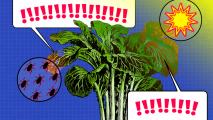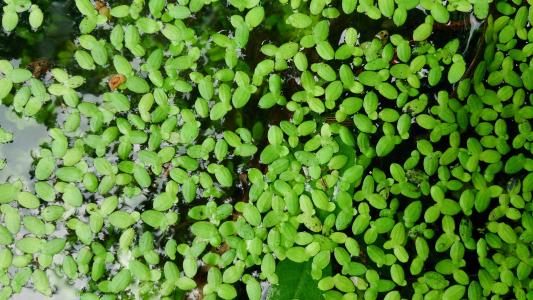Scientists from the University of California, Riverside have engineered tomato plants to stop the fungus that causes grey mold, a disease that kills millions of fruits and vegetables each year.
This work could lead to eco-friendly, natural fungicides that protect food crops without leaving toxins in the soil. Surprisingly, this kind of natural fungicide was discovered by studying how plant cells communicate.
A Natural Defense System
Many biological cells make tiny round vesicles, called exosomes, that move extracellular RNA (exRNA) from cell to cell — like a boat shuttling messages between ships in a fleet.
Plant cells also make these vesicles. Why they do this was a mystery for a long time. It turns out that this messaging system is also a weapons platform.
Researchers have now discovered that this mechanism is used to communicate or transfer genetic information between the plant’s cells and invading microorganisms.
Specifically, the tiny vesicles are a launchpad for exRNA molecules, which attack fungal invaders and suppress the genes that make them a threat — a natural fungicide.
“These vesicles shuttle small RNAs between cells, like tiny Trojan horses with weapons hidden inside,” said UC Riverside geneticist Hailing Jin. “They can silence pathogenic fungal gene expression.”
Scientists have only recently discovered this trick, using RNA to try to silence genes that cause disease in humans — but evolution came up with it first.
Jin’s team identified a key protein for making this natural fungicide work. The protein acts as a binding agent, escorting small RNA molecules into the vesicles. Then the team engineered tomato plants to release exRNA that silences a crucial gene for a fungal enemy that causes grey mold.
To test their new mold-resistant plants, they sprayed two sets of plants with grey mold. They engineered one group to release the exRNA that attacks the fungi. The other collection of plants were unchanged.
The results, published in Nature Plants, were clear. The engineered tomato plants remained healthy and green, while the other plants turned dark and their leaves died, reports Scientific American.
The Upshot
This work could lead to new eco-friendly fungicides that better protect foods by targeting the fungus without breeding resistant pathogens. Additionally, using RNA’s natural fungicide could prove to be better for the environment than conventional fungicides because it biodegrades without leaving toxins in the soil.
As an added bonus, the findings have implications for human health, as well as plant health. Researchers are looking into loading anti-cancer RNAs into vesicles in specially designed fruits and veggies, which cancer patients could then eat or drink.
We’d love to hear from you! If you have a comment about this article or if you have a tip for a future Freethink story, please email us at [email protected].






